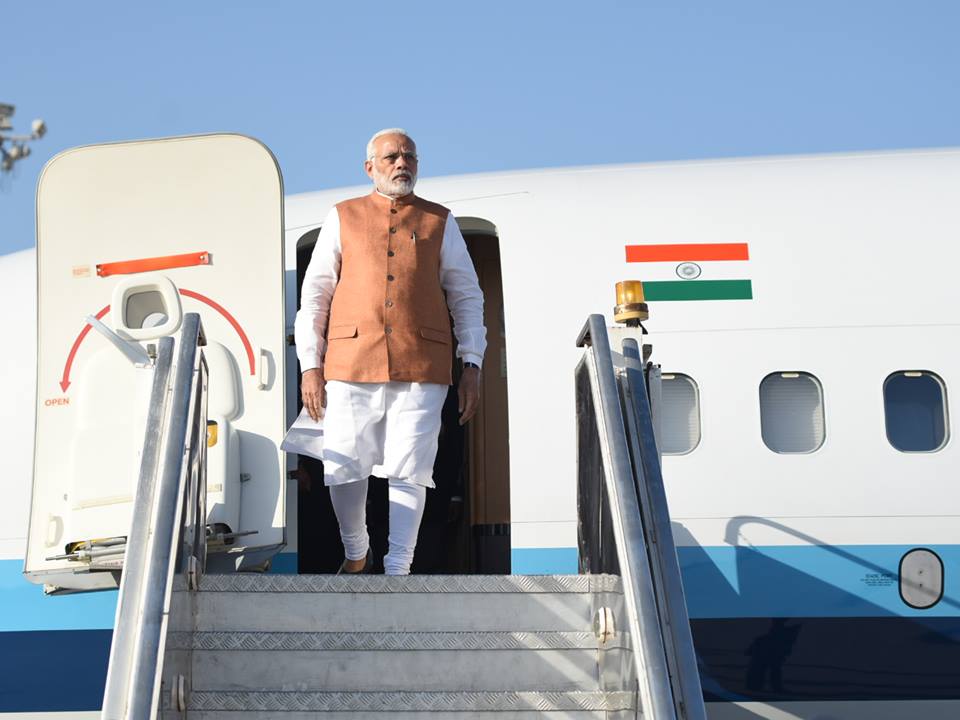
DUBAI, United Arab Emirates — Indian Prime Minister Narendra Modi started the second day of his visit to the United Arab Emirates on Sunday by unveiling a model of the first Hindu temple that will be built in the UAE capital of Abu Dhabi, a testament to the stronger ties that both countries seek.
Standing on stage at the Dubai Opera, Modi spoke before hundreds of diplomats and Indian expatriates about the historical ties linking India with the small, but oil-rich and increasingly influential UAE, where 3.3 million Indians reside — far outnumbering the country’s own local population.
Around half of the Indians living in the UAE are lower-wage migrant labourers. Many hold construction jobs, building the UAE’s dazzling skyscrapers and shopping centres. The UAE is also home to wealthy Indian investors, some of whom run the country’s largest hospitals, schools and supermarkets.
India’s cultural and economic influence on the UAE is so great that Dubai’s daily English newspaper, Gulfnews, created a video on its website titled: “How Indian is the UAE?” The video explains that, for example, the UAE used to use Indian rupees before the local currency, the dirham, and that many locals still refer to one dirham as a “rubiya”.
“Today, whether it’s the UAE or other countries in the Arabian Gulf, our relationship is no longer just that of a buyer and seller, it’s a partnership that’s been built,” Modi told the audience in Dubai.
India and the UAE are key trading partners and seeking to boost investments. On Saturday, Modi and Abu Dhabi Crown Prince Mohammed bin Zayed Al Nahyan oversaw the signing of several agreements, including a $600 million deal awarded to a consortium of Indian companies for a 10 per cent stake in a major Abu Dhabi offshore oil concession.
The deal marks the first time Indian oil and gas companies will have a share in the UAE’s crude production.
On Sunday, Modi unveiled the model of the traditional stone temple that will be built in Abu Dhabi, which is scheduled to be completed by 2020. The historically Muslim country already has one Hindu temple in the nearby emirate of Dubai.
On his first visit to the UAE as prime minister in 2015, Modi announced that the Abu Dhabi government had allotted land for the first Hindu temple there.
Modi, a Hindu like most of India’s population, has in recent months spoken out to condemn vigilante killings of Muslims in his country. His comments last year came amid growing public pressure by Indian novelists, poets and other intellectuals who condemned the attacks by vigilante Hindus angry over beef-eating or what they believe is the abuse of cows, which many Hindus consider sacred.
Although Modi’s nationalist Hindu party has an uneasy relationship with his country’s roughly 120 million Muslims, Modi is still popular among a broad spectrum of Indians. He is expected to seek another five-year term in 2019.
His Mideast tour is strategically important for India as it seeks a greater foothold in the Muslim-majority region, particularly in the Gulf, which has one of the highest defence spending budgets in the world.
While in Dubai, Modi met with business leaders from across the Arabian Peninsula and Dubai’s ruler and the UAE Prime Minister Sheikh Mohammed bin Rashid Al Maktoum. He also spoke in Dubai at the World Government Summit, an annual gathering of influential policymakers and heads of state.
He said that more than half of India’s population is under 35 years-old, linking its youthful population and its start-up culture to the theme of innovation and technology at the summit.
He also praised Dubai for its ability to virtually transform its deserts and sand “into gold” — a nod to the emirate’s rapid transformation from a community of pearl divers to a metropolitan city of skyscrapers.
Modi is scheduled to head next to the neighbouring Gulf state of Oman. He was in the Palestinian territories on Saturday and met with Palestinian President Mahmoud Abbas.